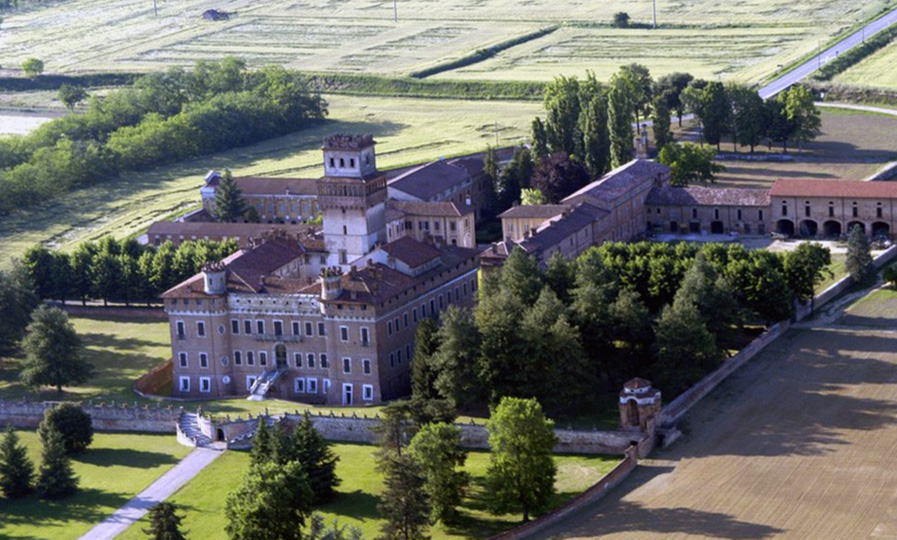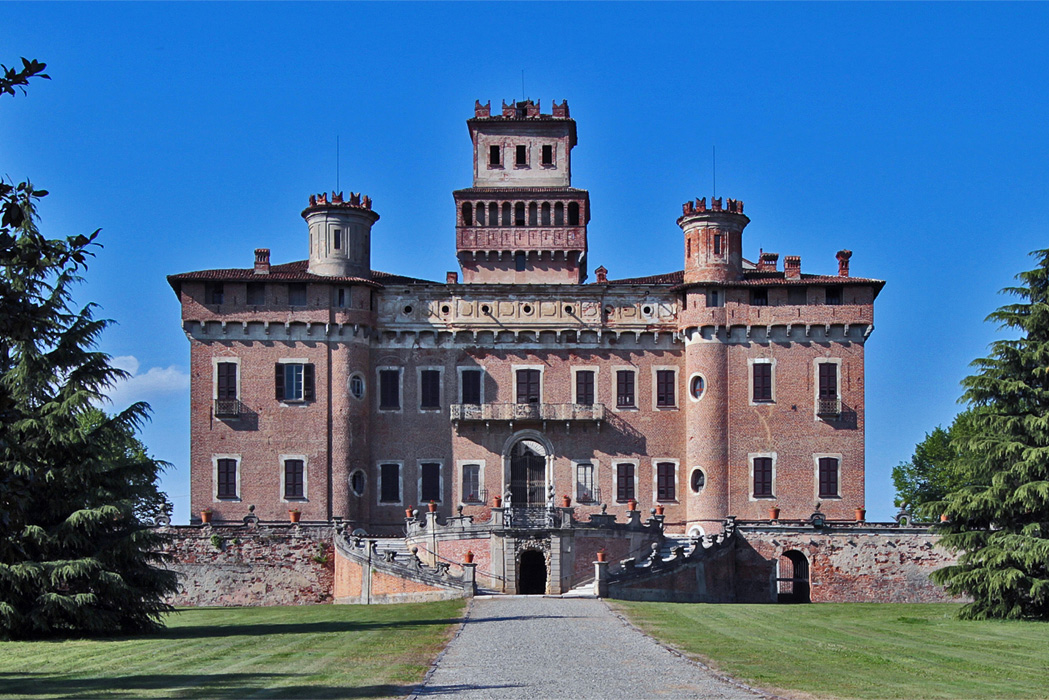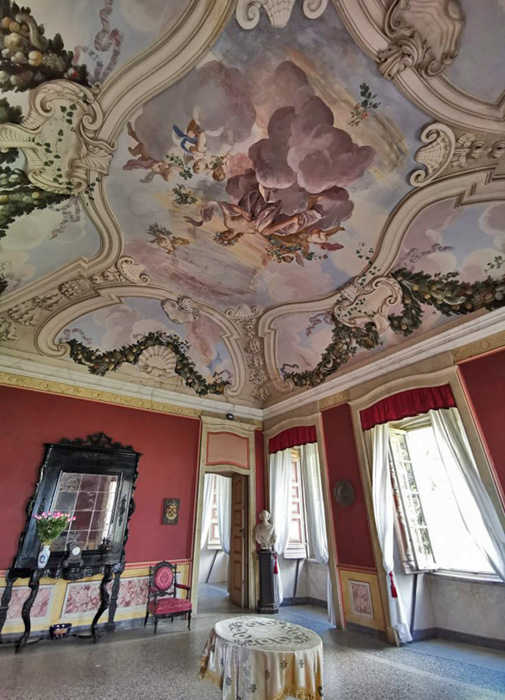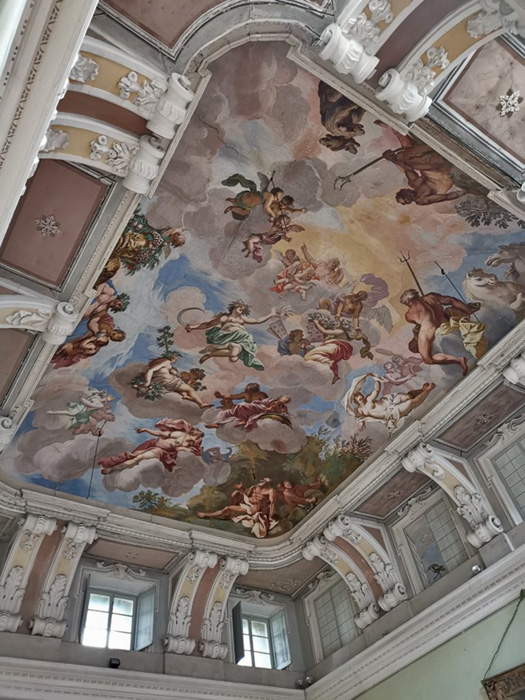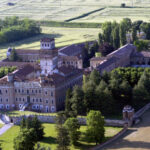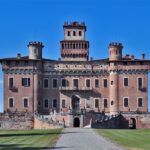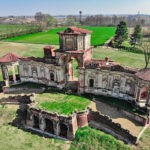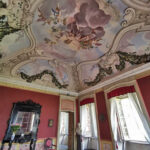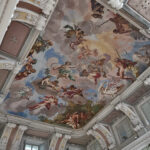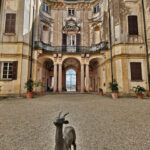Chignolo Po Castle
>>Milan Golf District
>>Emilia Golf District
The oldest part of the Castle, which was originally built as a fortress on a hill, is the great Tower. From here, one could control a long stretch of the Po River (known as Cuneulus super Padum). It is believed that King Liutprando had the tower built around 740 AD, when Pavia was the capital of the Lombards. It served as a fortress for defense and to guard the Po and the “Via di Monte Bardone,” which was later known as the Via Francigena – Romea, connecting northern Europe with Rome.
In 910 AD, King Berengario gave the fortress to the Benedictine monks of the Abbey of Santa Cristina, which was located a few kilometers away, making it a part of the abbey. In 990, the Archbishop of Canterbury, Sigerico, passing through the Via Francigena on his return from Rome to Canterbury, identified the Santa Cristina Abbey, with its castle, as the 40th stop (mansione).
In front of the fortress, to the north, stands the Borgo (Ricetto), entirely rebuilt in the 1600s. It is characterized by an architectural complex protected at the entrance by a moat, two guardhouses, and four turrets at the extreme sides.
In 1251, the Abbot of the Abbey of Santa Cristina appointed a Feudal Lord to govern the Castle and the extensive territories attached to it. The Castle soon became one of the greatest Lombard fiefs, first held by the Pusterla, who were involved in an anti-Visconti conspiracy and were ferociously exterminated in 1340.
Later, the Federici and the Cusani came, who increased the power of the Castle to the maximum, receiving continuous privileges and concessions from the Kings and Dukes of Milan. The investiture of the Cusani as feudal lords of the Chignolo Po Castle lasted until 1796, when the Feuds were abolished by the French Revolution.
From 1700 to 1730, the Castle was expanded and transformed from a medieval fortress into a real 18th-century Royal Palace. Popes, Emperors, Kings, Princes, and Archdukes stayed there, while Tiepolesque artists were entrusted with the creation of stuccos and paintings that adorn the Castle’s reception halls.
The work was carried out by the owner of that period, Cardinal Agostino Cusani Visconti (1655-1730), who was the Pope’s Ambassador to the Venetian Republic and the Court of Louis XIV in Paris.
The Roman architect Giovanni Ruggeri called on Venetian and French craftsmen, sculptors, and painters to oversee the construction of the large park on over 30 hectares of land around the Castle.
The central part of this landscaping intervention was the construction, in the center of the park, of a marvelous baroque building, with a lake in front of it, called “Palazzo del Tè” or “Palazzina della caccia.” The park was enriched with gardens, gazebos, nymphs, statues, and fountains.
As for the main building, the “Cortile d’Onore” was created, adorned with the Cardinal’s episcopal coat of arms on the main balcony, which was connected to the garden by an elegant little bridge. The construction of the entire eastern wing was also completed, with dramatic guest apartments inside, including the famous “Pope’s apartment,” dedicated to Clement XI, and the bedroom where Napoleone Bonaparte and Emperor of Austria Francis I of Habsburg were hosted.
Following these grandiose works, the Chignolo Po Castle was dubbed “The Versailles of Lombardy”.

